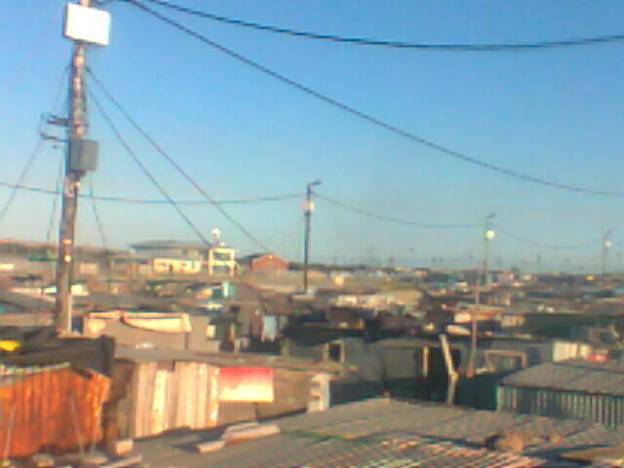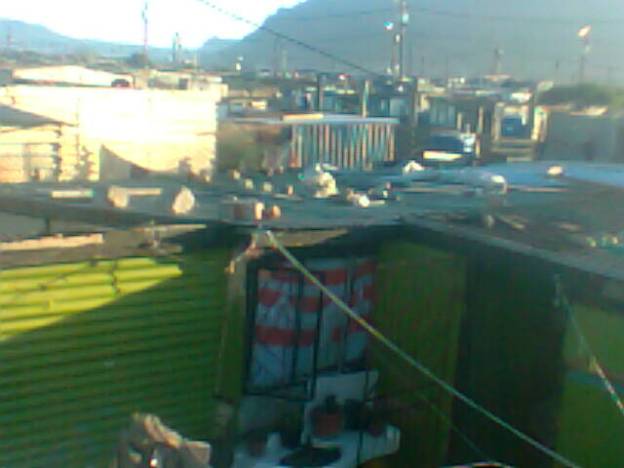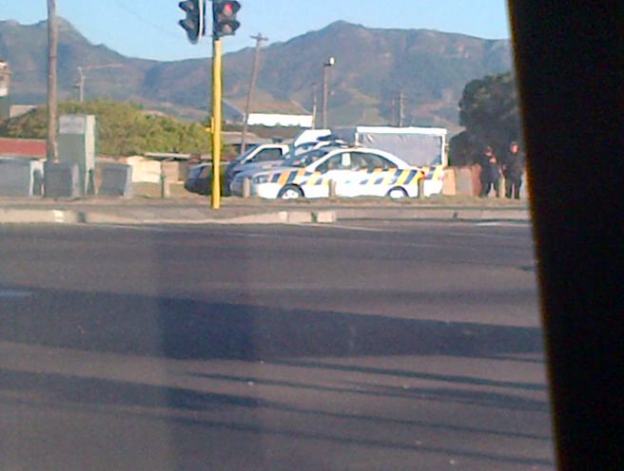Poverty and Violence on the Cape Flats.
“Bullets have no address”
Poverty and Violence on the Cape Flats.
“Bullets have no address”
Last week one of the posts had something to do with policies which have come and gone. South Africa has the tendency to make policies, toss them out after a year or two, recycle them five years altar and rename them. An example of this would be the National Crime Prevention Policy (1996), which was tossed aside and then revived in the Urban Renewal Strategy (2002). Be that as it may, we still have a problem, while doing some reading I came across something known as the Ceasefire programme which is concentrated in gang-ridden, Inner-CIty Chicago in the USA.
Ceasefire aims to change small numbers of individuals at a time, with the end result being, change in whole communities, it also draws its theories from public health theories. This programme comprises of: Clergy members, ex-gang members, regular members of the community. Ceasefire has what is known as “Violence Interruptors”, these people are deployed to intervene, when violence is about to erupt or when it already has. They step in and convince those involved to settle things amicably and without violence. They do not try to persuade them to break gang affiliations, they only attempt to stop the violence taking place at that particular time, they diffuse volatile situations and ensure the safety of those involved.
Ceasefire also has outreach programmes for individuals at risk and those wanting to leave gangs. Ceasefire has been succesful because violence interruptors are often times ex-gang members and members of the clergy. They facilitate access to gang members and gang areas, they are culturally appropriate members. Law Enforcement Agents cannot gain this type of access and of they do it is often met with violent retaliation.
Now, if we were to apply something similar to the Cape Flats instead of broad-based, ambitious policies, perhaps we would see some success in the reduction of violence. a programme such as Ceasefire in my opinion, would do quite well on the Cape Flats. An area such as Lavender hill and Mannenberg are littered with gangs, in order to get them to stop the violence, one would need to speak to those at the top of the gang hierarchy. Who better to do this than individuals who are culturally similar? who understand the inner workings of the gang structure?
Outreach programmes are a definite need within these communities, these programmes need to be implemented on a long-term basis, not 3-6 months but perhaps years. Until we are sure these young men and women are fully rehabilitated, and are strong enough to withstand the pressures of living in an are such as Hanover Park.
Yes, momentary violence interruption is not a long-term solution but it is a start. In that moment, change may occur in the community and in individuals themselves. This will also go toward aiding unity within the communities. And in order to fight violence unity within the community is key, yes policing is good and well but at the end of the day they go to their own homes and areas such as Lavender Hill are still left without solution.
On my way to campus this morning, I had a thought. I looked around in my area and I wondered, is Lavender Hill the way it is because of individuals or because of the structural environment?
There is a sociologist who describes the reasons for deviance as, “place, place, place”. His name is Hersche and his theory is known as the Social DIsorganisational Theory, Now I won’t bore anybody with the stringent academic version, I will simply summarise.
SOCIAL DISORGANISATIONAL THEORY
Characteristics of the places include:
Lavender Hill, Hanover Park, Parkwood, Sea-WInds, Mitchells Plain and various others, all fit this description. This because of the Apartheid legacy, hoards of coloured/mixed race and black families were fo9rced out of the city center and into these suburbs on the outskirts of Cape Town. Unfortunately even with the transition government, these factors became embedded in communities, families and communities could not escape it. Could it be the Hersche’s “Place, place, place” theory applies to the Cape Flats? Of course it is only a theory and everyone may not agree but it needs to be said that it does have valuable points. Could it be that our government needs to take a sociologically based approach in fighting crime in these areas?
Lets look at the reasoning behind this kind of approach: Severe poverty causes rampant conflict and high levels of crime in communities, this is a given. A zone of transition, as can be found in Cape Towns industrial areas such as Epping Industrial and Athlone, puts residence and children at an increased risk for crime and deviance. It is easy for children to skip school and play in a vacated dockyard or warehouse. In Retreat main road, empty buildings become breeding grounds for criminal activity. The ease at which residents move in and out creates a lack of unity in communities, one minute they’re here the next they’re gone. Dilapidated buildings and parks not only create criminal breeding grounds, but they parks are no loner safe for children to play in, resulting in inactive children, who then find other means of entertainment and these are often destructive.
So maybe, just maybe, the stigma attached to the Cape Flats as well as its structural challenges are aiding the high levels of crime and deviance we experience. Maybe the government should try looking at this from a different perspective.
Not to far away from the Retreat one can find areas such as Vishoek and SImons Town. These areas are beautiful, the sea is practically on residents doorstep an dcrime is at a minimum.
These are the more affluent areas of Cape Town, the residents here have very little knowledge, of what is happening on the outskirts of their ideallic homes.
What crimes do they experience, if any? What if roles were reversed, and areas such as Vishoek suffered from daily gang wars? How would government then respond?
Food for thought…
Operation Choke is the latest response from the poice, in an attempt to combat gang violence on the Cape Flats.
The word “Choke” suggests the relentless nature of this operation. Does Cape Town need more violence? The name stands in stark contrast to some of the previous Police operations: Previous operations were called: Operation Good Hope, and Operation Gang Bust. Does “CHOKE” mean there will be an increased level of violent confrontation between gangs and police?
More fatalities is not what this area needs.
State responses to the gang violence in Cape Town, is a topic this blog has not yet covered. Yes, we know there is police intervention but what are the State responses to this epidemic, and have they yielded any results?
Anti-gang Policies:
Urban Renewal Strategy -2002 This policy sought to integrate local agencies and resources along with crime prevention strategies.One of the aims of the policy was to finish what the National crime Prevention Policy had started, it envisaged many of the crime prevention strategies the NCPP had to offer, it was highly ambitious and its focus areas in the Western Cape were Mitchells Plain and Khayeltisha. Unfortunately, there was little mobilisation of government resources, it progressed to slowly.
Provincial Gang Strategy- 2003: This was a no holds barred approach, this policy sought to intensify police enforcement. This strategy, fuelled the already, rampant violence on the Cape Flats, more lives were lost during intense gun battle,a nd there was a lack of accountability on the part of the law enforcement agencies.
These are only a few of the policies which have been erected, sadly they have yielded minimal results, reasons such as political shifts, funding and resource shortages and a lack of communication has caused many of these policies to fall flat. These policies look good on paper but correct and ethical implementation remains to be seen.
We commend our government for passing these Acts, but we now need them to get their hands dirty and actually implement it.


The scenic views of Table Mountain often take our breath away, this is true for tourists and locals alike, but behind the scenic drive of Chapman’s Peak lays a part of Cape Town, many people are unaware of , this place is known as The Overcome Heights informal Settlement. It is a sea of mouldy browns, glimmering grey zinc plating and rusty metals, nestled on white sand dunes. Hundreds of families call Overcome Heights home, the smell of faeces and urine soaked sand has become a norm, sharing a public toilet with three different families is routine and shack fires have become just another hazard.
The Overcome Heights Settlement informal home scheme was erected in November 2005. Residents occupied the council owned land which served as a road reserve between the Vrygrond and Sea-Winds area, residents stemmed from the surrounding areas of Sea winds, Vrygrond, and Hillview. Overcome heights housed only twenty families in the very beginning but by 2006 it had risen to 1300 residents. Some residents have been living on these sand dunes for almost 8 years and still no provision for housing has been made by the government. Before government provided electricity there had to be a spate of shack fires, caused by candles and paraffin stoves. This devastated homes and families. Before proper running water and ablution facilities were made available, there first had to be an increase in the cases of children falling ill with severe diarrhoea and dehydration. Residents are struggling to keep their families fed and away from illness and death.
Crime and poverty are a duo which cripples the residents of the Overcome Heights Informal settlement of Retreat Sea winds. Residents are fearful of violent crime; robberies are a daily occurrence here. The Overcome Heights informal settlement resembles a maze, every littered corner, houses a makeshift drug den. As I walk with Whitney, a resident of overcome heights, she talks to me about the difficulties of staying in a shanty town. “It’s difficult when you’re a young woman and you’re surrounded by all these drunken men, it scares me when I have to go to the toilet and these men whistle at me and make sexual remarks. I honestly feel like this place should be burned down but where would all the families go…” Whitney is referring to a band of young men who “own” this turf. They peddle drugs such as methamphetamine, or more commonly known as tik, and mandrax. I stopped to speak to one of the young men, he would not disclose his name but he was willing to offer some information. He described himself as the little fish in a big sea, and by this he meant the drug trade. “The police are catching the wrong people, I’m only trying to feed my family, and they’re focusing on the little fish. The real bosses will never live here. Their raids here in Overcome are a waste of time”
I found this to be an interesting statement, if the “real bosses”, as he describes them, would never live here, where would they live? Perhaps they live in the lap of luxury, with unsuspecting neighbours, and families? The people, who reside in the Overcome Heights Informal housing settlement, share the same sentiment and have a lot to say about policing in the area. Just like the anonymous young man had said, they seemed to be going after the wrong people, some older residents said that there is a hierarchy system in the drug trade and if those individuals in positions of power were caught, drug supply would diminish. Residents also said they feel unsafe, even with patrols, because patrols are at a minimum in the area. This raises many questions about the provision of protective resources in informal settlements. One of the older residents, Merl Japhter, said she’s called the police numerous times to disband rowdy young men outside her home. “I don’t know what to do anymore, they break down everything I attempt to put up, life is already very difficult and the government does absolutely nothing about it, we were promised housing so long ago but still nothing. They also promised us building materials for our homes but we haven’t received that either.” The residents of Overcome Heights are despondent about ever receiving homes and worse yet, they have very little faith in the ability of the current government to provide them with the services and infrastructure they so desperately need.
The Overcome housing informal settlement in Cape Town is not the only one of its kind. Everywhere the same problems occur, and the government has made very little effort to provide residents with dignified living standards. The situation in the Overcome Heights Informal Settlement is slowly starting to resemble the informal settlements of Khayelitsha, where policing is below par, and residents anger and frustrations are expressed in the form of violent protests, burning tires, and the necklacing of criminals. In one incident a city official’s house was set alight because of failed service delivery. The only things residents request are, water, basic sanitation facilities, electricity and proper housing. Last time I checked all those were basic needs and it is the government’s duty to ensure the needs of citizens are being met. Two decades into democracy and the South African government still has a severe backlog in most of these areas, be it justice, land reform, or the provision of housing. This begs the question what are they doing and why is it taking so long?
South Africa received a standing ovation for its world class constitution and its shift into democracy. The South African bill of rights is one of the finest in the world. But as I walk through the sandy dunes of the Overcome Heights settlement, it is obvious that oppression is not yet over, although racial oppression has waned, class oppression is ever alive, only this time the ruling class are made up of a few different shades of grey…
